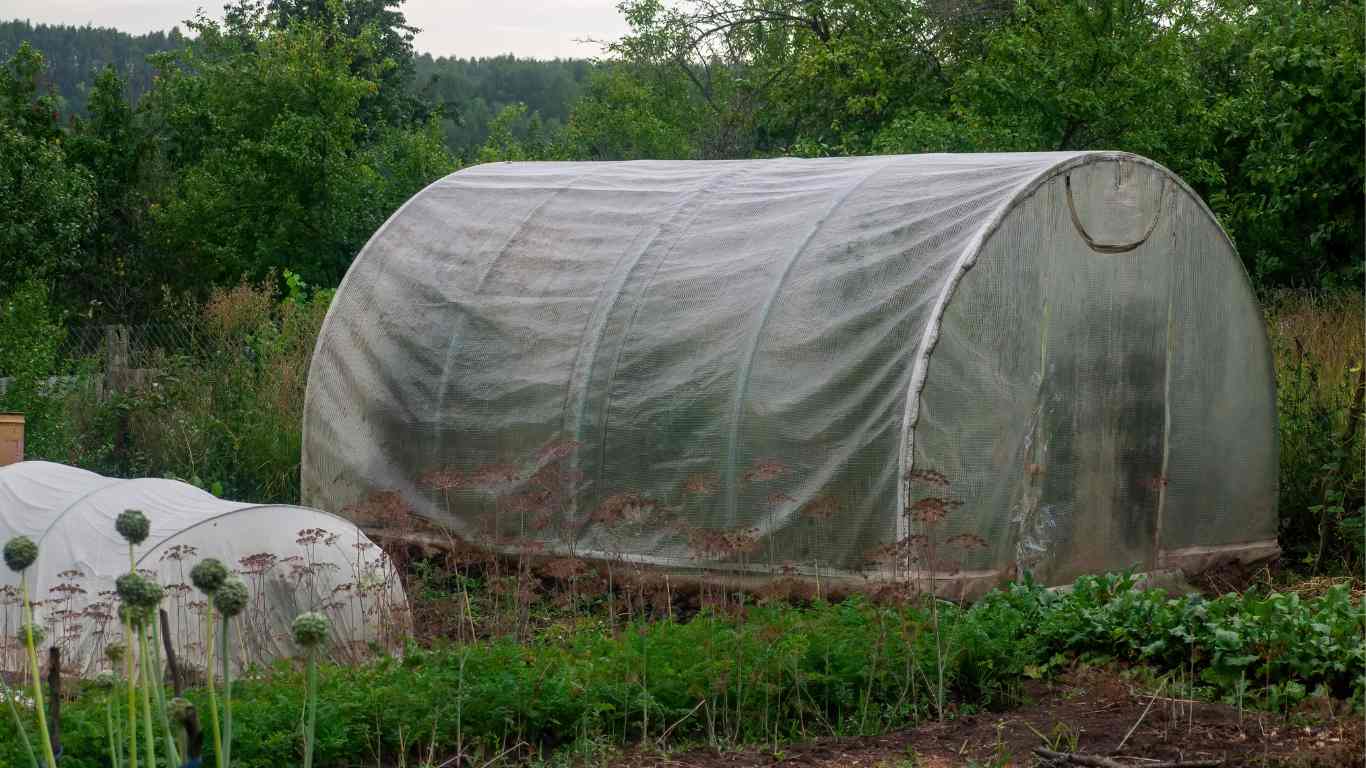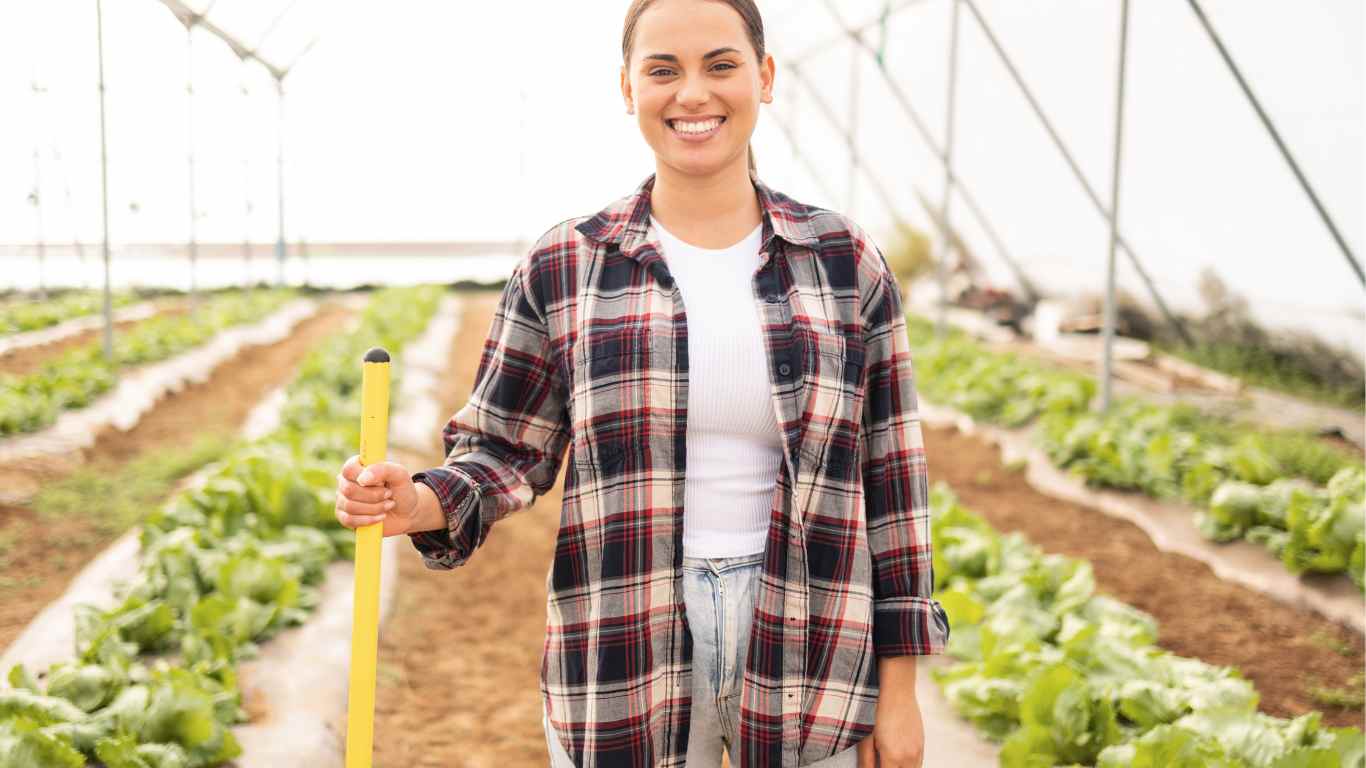Are you tired of depending on the unpredictable weather for your vegetable garden’s success?
Well, fret no more! Today, I’ll be sharing the secrets of harnessing a greenhouse’s power to grow your lush and bountiful vegetable paradise.
Whether you’re a beginner or a seasoned gardener, these tips and techniques will help you make the most of your greenhouse and cultivate mouth-watering vegetables all year round. Let’s dive in!
Maximizing Greenhouse Space
When it comes to greenhouse gardening, space is a valuable commodity. You can transform your greenhouse into a vegetable wonderland by making smart choices and utilizing vertical growing techniques.
Imagine suspending baskets of luscious tomatoes from the ceiling or training climbing vegetables like cucumbers and beans up trellises. It’s a space-saving dream come true!
Temperature and Humidity Control
Mastering temperature and humidity control is crucial to unleash your greenhouse’s full potential. Different vegetables have specific requirements, so it’s essential to understand their preferences.
For instance, tomatoes love warmth, while leafy greens like spinach prefer cooler temperatures. Invest in a reliable thermometer and hygrometer to monitor the conditions, and consider using shade cloth or misters to fine-tune the environment.
Greenhouse Vegetable Varieties
Now that you have your greenhouse optimized for plant growth, it’s time to choose the stars of your vegetable garden. When selecting vegetable varieties, opt for those that thrive in controlled environments.
Some popular options include vibrant cherry tomatoes, crisp lettuce varieties, colourful bell peppers or courgettes. Herb gardening is ideal for greenhouse, so make sure you include some popular herbs like mint or basil. Don’t forget to experiment with exotic vegetables, like microgreens and baby bok choy, for a culinary adventure!

Greenhouse Irrigation Systems
Maintaining proper moisture levels in your greenhouse is vital for vegetable success. Installing an efficient irrigation system can help you provide water with precision, preventing under or over-watering.
Drip irrigation systems and self-watering containers are excellent choices for greenhouse gardening. Consistent moisture is essential, but avoid waterlogged soil.
Pest and Disease Management
Just like any garden, greenhouses are not immune to pests and diseases. But fear not! You can safeguard your vegetable haven by implementing preventative measures. Introduce beneficial insects like ladybugs and lacewings to control pests naturally.
Make sure to regularly examine your plants for indications of illness, and swiftly eliminate any affected leaves to avoid the further transmission of diseases. Organic insecticidal soaps and neem oil can also be rescued when needed.
Greenhouse Gardening Techniques
Seeds are the lifeblood of any garden, and starting them off right is key to a flourishing greenhouse. Create a dedicated seeding area with a heat mat or propagator for optimal germination conditions.
Consider using a seed starting mix for better moisture retention and disease prevention. Label your trays for easy identification, and before you know it, you’ll have a vibrant army of seedlings ready for transplanting.
Harvest and Storage
The moment you’ve been eagerly waiting for has arrived-the harvest! Carefully pluck your ripe vegetables, savouring their flavours and vibrant colours.
Don’t let the bounty overwhelm you; instead, store excess produce properly to enjoy it later. Refrigeration, canning, freezing, and even dehydrating are fantastic preservation methods allowing you to relish your greenhouse goodness all year.
Ventilation and Lighting
Proper ventilation and lighting are the final puzzle pieces to complete your greenhouse utopia. Ventilation helps regulate temperature, prevent fungal diseases, and promote air circulation for healthier plants.
Additionally, supplemental lighting, such as LED grow lights, can extend the growing season and ensure your plants receive the necessary light for photosynthesis, even during cloudy days.
Greenhouse Soil Health
Maintaining healthy soil is essential for robust vegetable growth in a greenhouse environment. While it’s tempting to reuse the same soil year after year, it’s important to replenish its nutrients to avoid depletion.
Consider incorporating compost, well-rotted manure, or organic fertilizers into your soil preparation routine. Regularly test the pH levels and adjust if necessary to create an optimal growing environment for your vegetable plants.
Companion Planting in the Greenhouse
Companion planting is a gardening technique where compatible plants are grown together to enhance growth, deter pests, and maximize space utilization. Bringing this concept into your greenhouse can work wonders for your vegetable garden.
For example, planting marigolds alongside tomatoes can repel harmful insects. At the same time, growing herbs like parsley and dill alongside leafy greens can attract beneficial insects for natural pest control. Explore different companion plant pairings to find the perfect combinations for your greenhouse oasis.
Greenhouse Organization and Maintenance
Maintaining a well-organized greenhouse is essential for productivity and ease of gardening. Create a system for organizing your gardening routine to streamline your tools, seeds, and supplies.
Regularly clean your greenhouse, removing debris and dead plant material to prevent the build-up of pests and diseases. Additionally, watch for damaged or worn-out equipment that may need repair or replacement to ensure smooth operations in your vegetable haven.

Greenhouse Microclimates
Microclimates within a greenhouse can offer opportunities to customize growing conditions for specific plants. By strategically positioning plants near heating vents, cooling fans, or water sources, you can create unique pockets of temperature and humidity that cater to individual plant preferences.
For instance, heat-loving plants like chilli peppers can thrive near a warm air vent, while moisture-loving herbs like mint can flourish near a water source. Experiment with microclimates to provide your plants with their ideal growing conditions.
Conclusion
Congratulations! You’re now equipped with the knowledge to grow a thriving vegetable garden within the cosy confines of your greenhouse.
From maximizing space and controlling temperature to choosing the right varieties and managing pests, each step contributes to your gardening success.
So, roll up your sleeves, get your hands dirty, and watch your greenhouse transform into a year-round vegetable haven that will tantalize your taste buds and make your friends green with envy. Happy greenhouse gardening!



